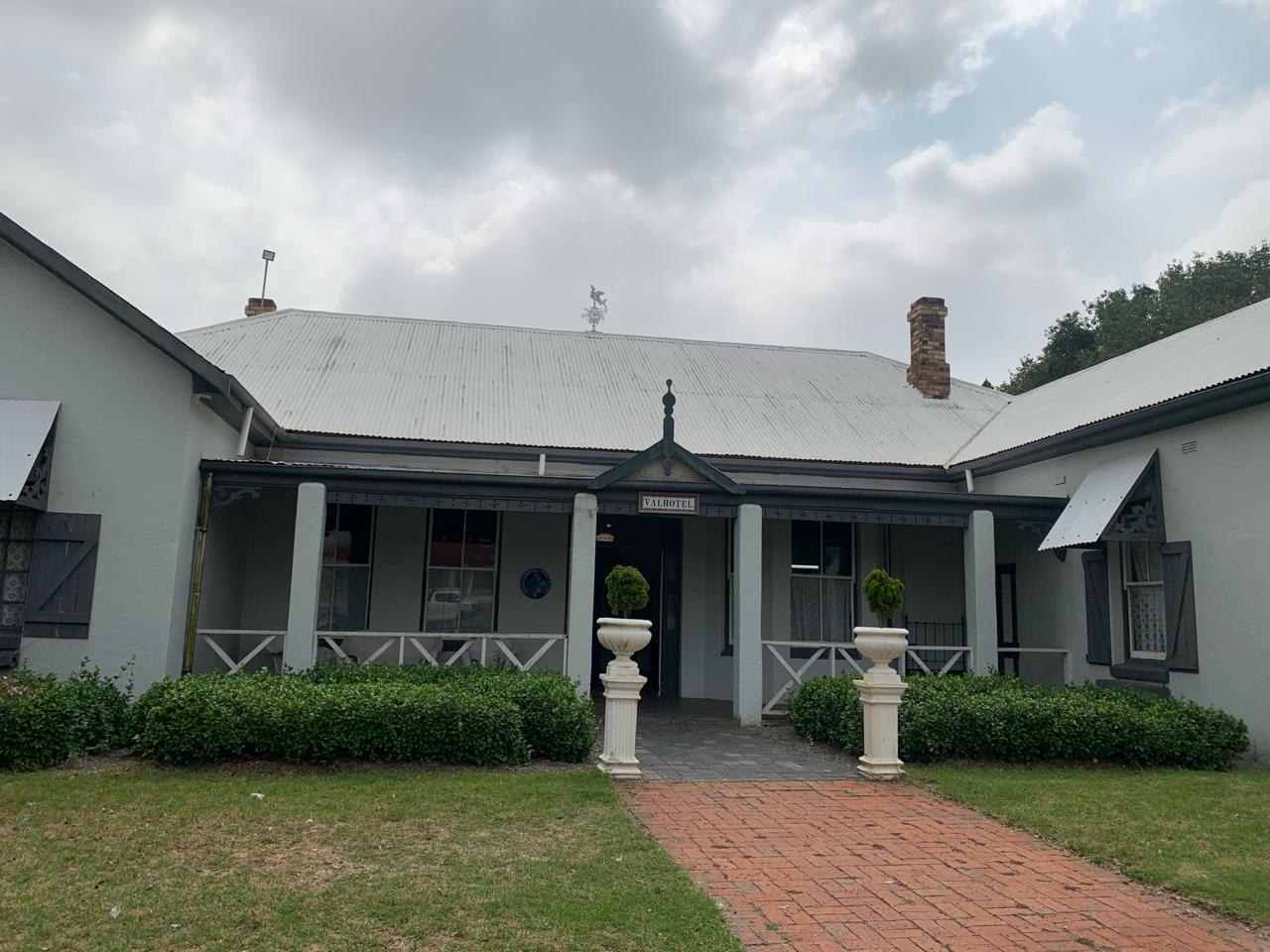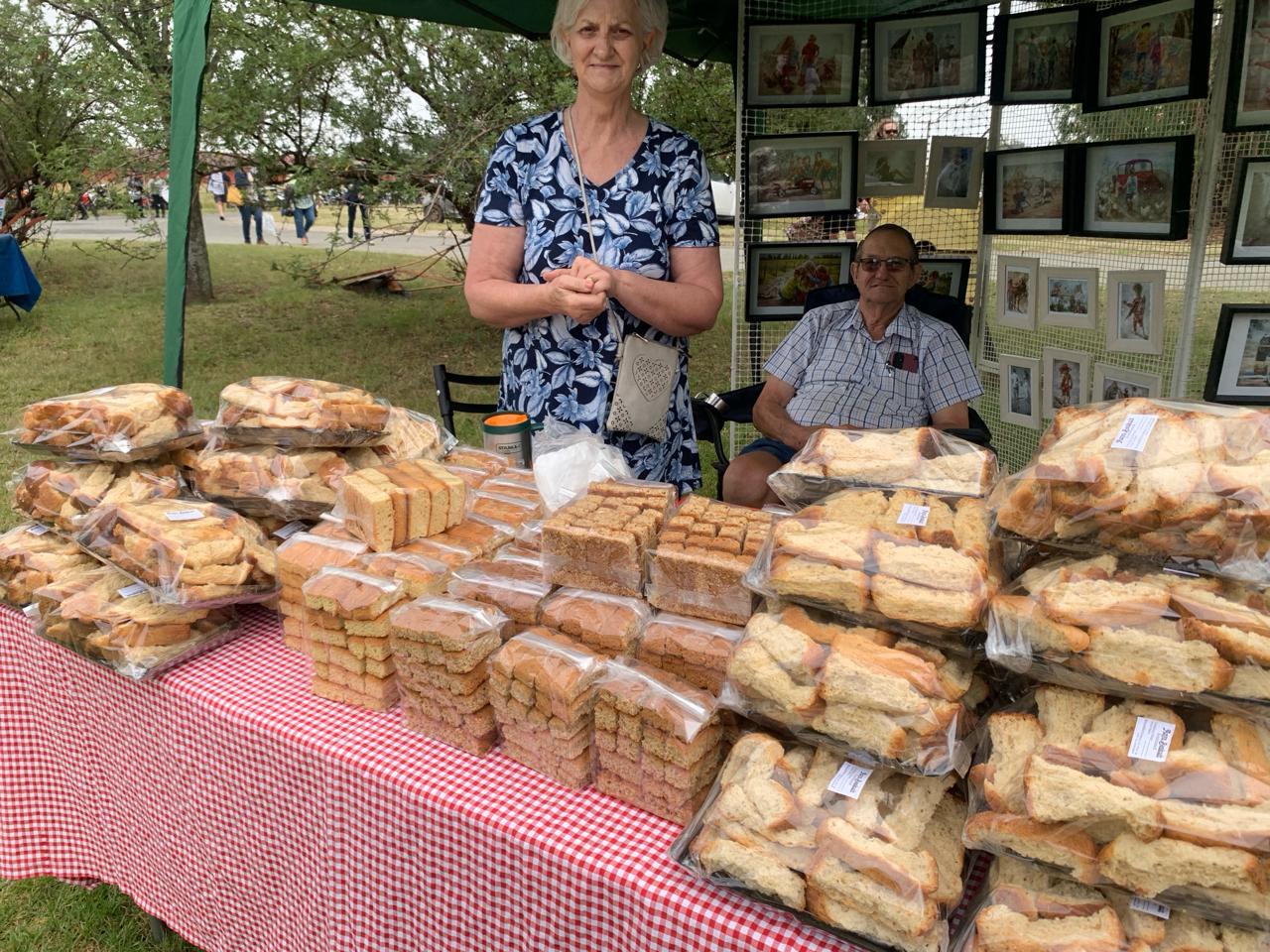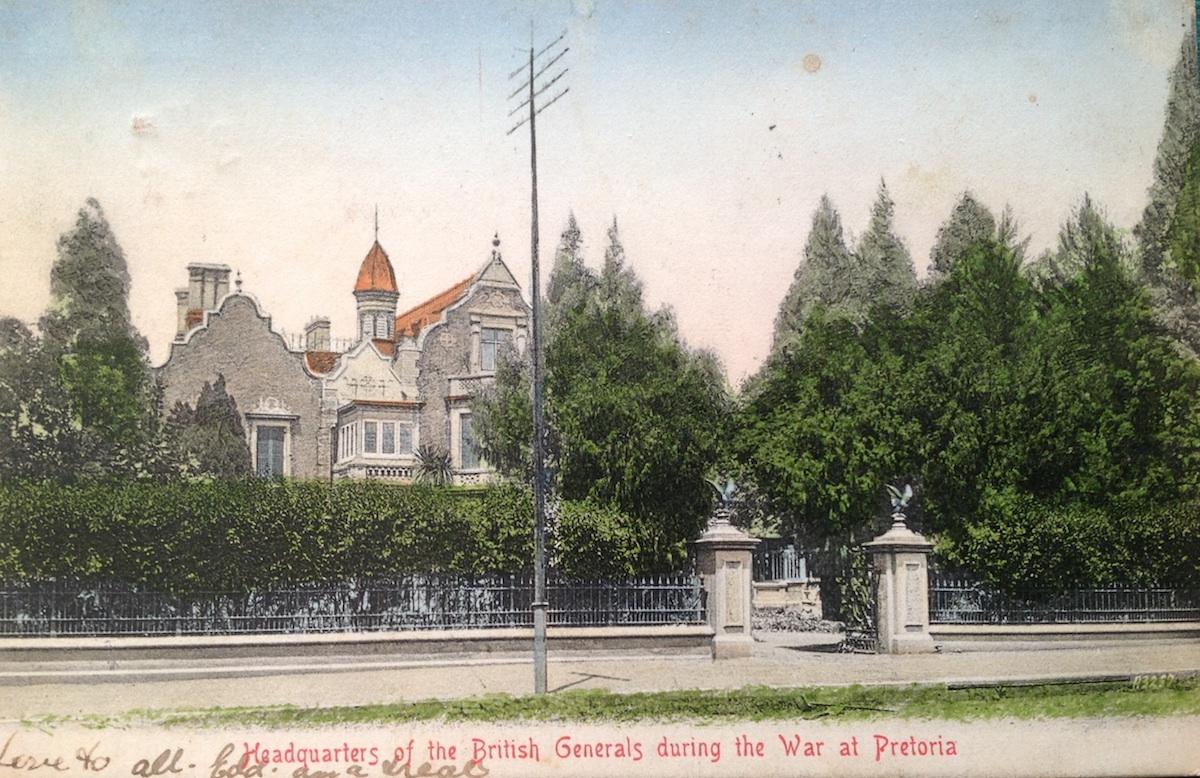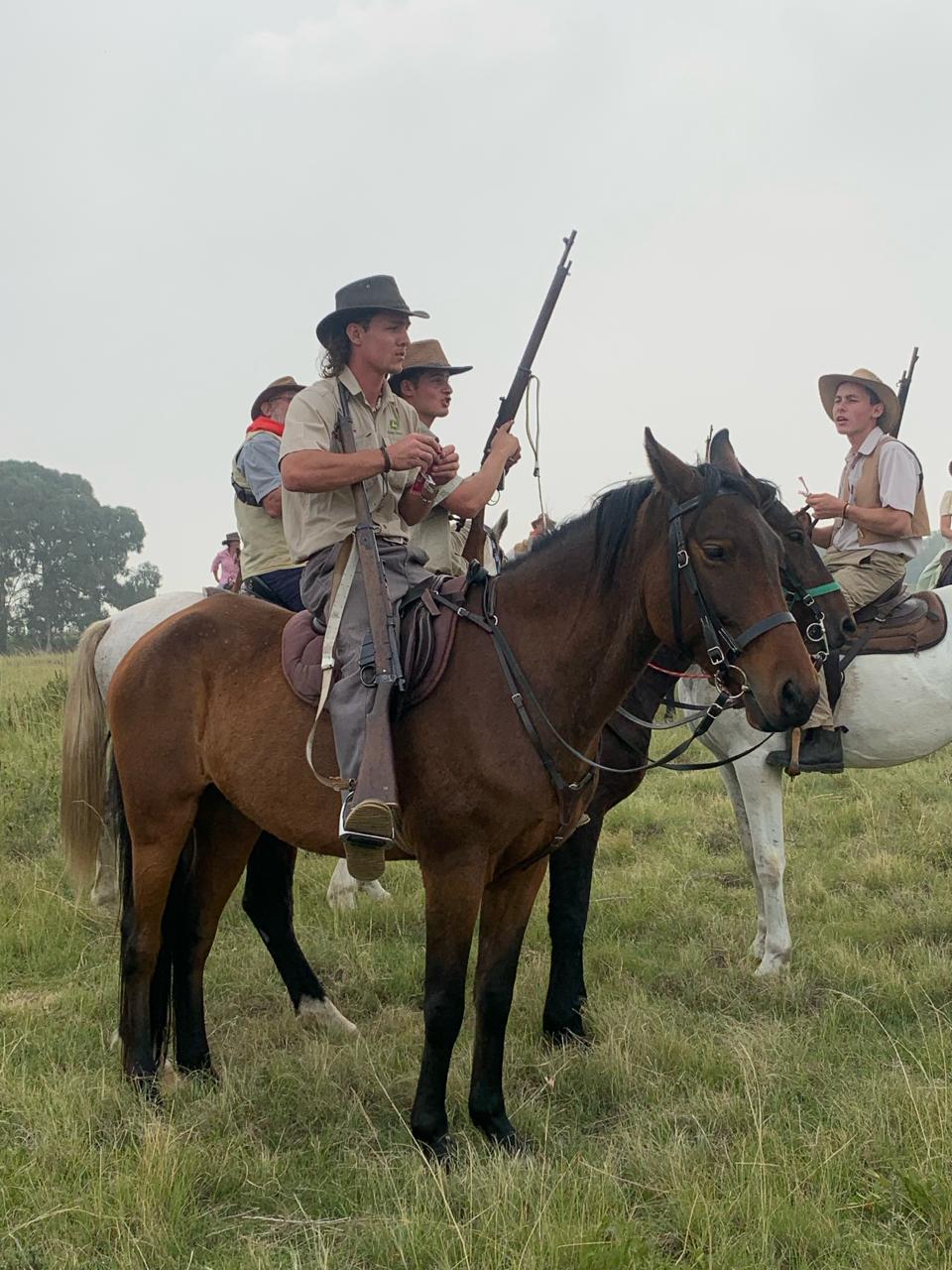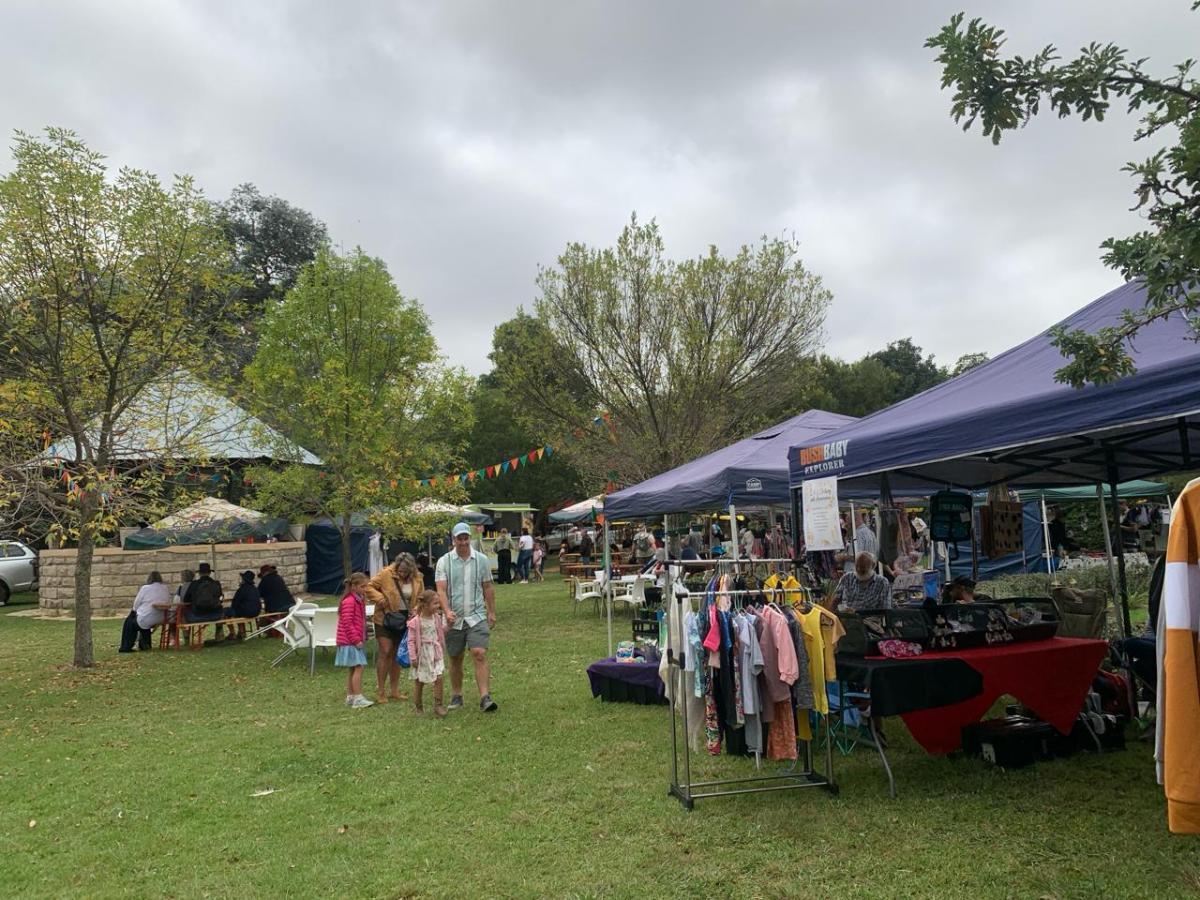
Disclaimer: Any views expressed by individuals and organisations are their own and do not in any way represent the views of The Heritage Portal. If you find any mistakes or historical inaccuracies, please contact the editor.
Val is a tiny place with a big history. It has a permanent population of eight. The Easter weekend was chosen for the 2024 Boer and Brit Day festivities. This annual cultural festival of all things Boer and British circa 1900 is the brainchild of Rita Britz who owns the Val Hotel and most other old properties in the small town.
Val Hotel (Kathy Munro)
The small hamlet of Val comes alive once a year when it hosts its unique Boer and Brit Day. The event has been on the calendar for Boer War history buffs since 2007. Rita’s efforts are strongly backed by military historian and Johannesburg lawyer David Scholtz. The festival takes place in late March or early April as it was in April 1902 that Val earned a unique place in South African history (read on to find out why).
The main railway line runs through the town and the dominant structures on the landscape are the giant grain silos. Surprisingly a train on its way to the coast rumbles through. It is the proverbial one-horse town, but not on its day of celebration when the farmers and their families arrive on horseback in their four by fours, towing horseboxes and farm trucks. Word has spread and a few hundred people gather to enjoy a festival and fair on an autumn day in the country.
The town is located in Mpumalanga. Val (pronounced Val as in the Afrikaans word – Waterval) is only an hour and a half from Johannesburg travelling east on the N3 and then beyond Heidelberg turn onto the R23 and head to Balfour and Greylingstad. It is some 30kms from Greylingstad off the main R23 connecting Heidelberg to Standerton. The distance to Standerton is 45 kms. Beyond Standerton is Volksrust and on to Wakkerstroom. This was once the northern route to Natal.
Val is now on the Biker’s itinerary – awesome Harley Davidsons, leathers, heavy boots, tough men and their equally tough women arrive by the dozen. These hardy bikers, who in real life could be weekday doctors or accountants, speed to Val to park their bikes at the bikers only parking.
We park on a nearby farm field careful not to step in cow dung and join the queue to pay the entry fee of R100 which comes with a goody bag, an enamel plate, a wooden cutlery set and an enamel mug. Its all yours for the carnival market – delectable farm food to be found at the stalls set up on the open town green. Tables are laid out on the green as this is also a food festival of pancakes, sosaties on sticks, syrupy koeksisters, tangy boerewors, spicy farm biltong, rusks and homemade sweets. There is the hottest possible chilli sauce and healing cannabis balm. I had hoped for condensed milk coffee in my enamel mug but this year it was only packaged Nescafe cappuccino. One man sells intriguing hand made wooden maths puzzles. There are a couple of book stalls - a choice of books on British royalty or esoteric and arcane titles of Boer War books in Afrikaans. Its South African farm food and home crafts at their best.
Rusks for sale (Kathy Munro)
John Edmund provides the country folk music, the ballads are a mix of South African and mid-Western American from the band stand. John, at 87, is a legend in the music world and, with his wife Theresa, keeps us entertained, tapping, and singing along. He has all the old favourites lined up and the audience love his easy style and running commentary.
People dress in traditional dress: satin long volksdresses, boere ladies kappies, Boer hats, or in our case pukka solar topees. If you are not a biker, the dominant colour for the men is khaki in about five shades, bush shirts, chinos and shorts and the veldskoene are regulation footwear.
This was our second experience of the Boer and Brit Day. This time the sky was overcast with cloud hinting later rain. We pass tawny farmland, the mealie crop looking dry but ready for harvest, there are sunflowers and sweet potatoes. There is a touch of autumn in the air – a smell of yellow khakibos and gorgeous cosmos in pink and purple blossom on the grass verges. It’s a beautiful day and one to soak up the beauty of the South African highveld.
We discovered Val in 2023 when the Heritage Association of South Africa (HASA) received an application for a blue plaque for the Val Hotel. The blue plaque was sponsored by David Scholtz and installed the same year. I attended the unveiling ceremony where communities remembered the heroic deeds of brave soldiers on both sides of the South African War.
The focus of the festival is on peace between British and Boer whilst recreating and celebrating the events of the Anglo Boer War (now renamed the South African War). The war split the community but, after the war, English and Afrikaners of the area found one another again and a peaceful community emerged. The sadness was that Val never grew into a sizeable town.
Val‘s origins go back to 1896. The town was founded following the completion of the railway line from Johannesburg to Natal. The railway changed the local economy because previously travel had been by stagecoach. A staging point had been at the farm of Joseph Smith at Waterval. Smith and his family built a new home called Shaftholm close to the railway junction. The main street of the village is called Smith Street. The Val hotel was built in 'about 1902' as was the Smith shop (Joseph Smith and Sons) which was sited next to the hotel. The old wood and iron post office moved from Waterval to Val in those early years. A police station was built later.
It was a logical place to serve the surrounding farms where the principal crop was mealies. The small town took shape around the hotel (and its bottle store), the railway station, a police station, a general dealer’s store (Val Winkel), a village green, a cemetery, a sports club (the most important sport was rugby but tennis and cricket were also popular). Then came a post office and later a school. There is single church - a small Anglican chapel, St Francis of Assisi (consecrated in 1965, but then burnt down in 1970 and rebuilt in 1971).
Val, with its railway station, was a strategic spot in the Boer War because of the heavy rail traffic. It was on the key supply line from Natal to the interior. The station is an obvious choice for a future blue plaque.
The hotel was the meeting place in 1902 of Botha and the Boer Commando leaders to explain why the war had reached a hopeless impasse with burnt out farms, concentration camps for women and children, fighting men captured and sent into exile to far away Ceylon, St Helena or Bermuda. Botha arrived at Val on 6th April 1902 and was on his way to Klerksdorp to meet with President Steyn of the Free State and other Boer leaders. Botha showed superb leadership qualities in his readiness, against heavy opposition of the bittereinders (bitter diehards) and some commanders in the field, to admit that a continuation of the war was too costly in terms of lives and livelihoods. He was open to British peace initiatives of early 1902 and he set about explaining why the tough terms of surrender should be taken seriously and negotiations opened. Fighting commandants left in the veld were hard to reach and communication, dependent on railway, telegraph and messengers on horse, was intermittent. There followed the historic meeting at Vereeniging and the ultimate signing of the Treaty of Vereeniging at Melrose House in Pretoria which ended what had been a tragic and bitter war on 31st May 1902.
Melrose House
Festival day in Val starts with a parade down the one tarred main road - horses, people, dogs and children march under the flag of one's choice to the accompaniment of fanfare and drums. Many are dressed in period costume with some men on horseback. The Vierkleur of the Transvaal, the flag of the old Republic of the Orange Free State and the Union Jack flag are caried high. There is an atmosphere of high excitement and children and adults stride out from one end of the town to the other.
At the Village Green a wreath was laid at the memorial for the British soldiers who died during the war and were previously buried at the Val Station. There are no longer graves in Val, as the remains were later reinterred in the garden of remembrance at Standerton.
The highlight of the festival is an extraordinary theatrical production like no other in the world. It is bizarre, unique and delightful. It is the recreation of an historic incident of the Anglo Boer War, the Whisky Train Incident. The affair was a comedic, light-hearted incident of a serious and bloody war. Or so it is remembered today. A theatrical re-enactment of the event is central to the day’s festivities. If you have never seen theatre on the veld, Val is the place to be. Everyone climbed into their cars and headed to the actual site above a culvert where the event took place on the old railway line on 29th December 1900. Today, a dirt road lined with pink, white and mauve cosmos in bloom runs alongside what was then the principal railway line.
Railway lines from the coast inland were the main supply lines during the war but these became vulnerable to ambush and attack by the elusive Boer commandoes. The line from Val to Heidelberg and then Pretoria was an obvious target. The Heidelberg Commando watched the supply trains travelling on the main line during the guerilla phase of the war. On 29th December 1900, it was Commandant Fanie Buys who had his men ready to attack a supply train as it passed over a vulnerable cutting and bridge. Two brothers Jack and Gert Van den Heever were in charge of the explosives – a mine to be buried at a choice spot and then exploded at the right moment to derail the train.
The story is graphically related in Ian Uys’ book Heidelbergers of the Boer War. There was a lot of luck involved as the plan could have been discovered when an inspection rail trolly first preceded the train. They could also have been discovered by a posse of horsemen riding alongside the track, but these men too passed on. Jack and Gert van den Heever remained hidden. The British armoured and troop train also passed. Finally, a goods train came into view and this was the moment of successful action, a spark of current raced along the wire and detonated the mine overturning a couple of coaches and spilling the contents alongside the track. The Heidelberg commando of about 150 horsemen with rifles arrived to charge the derailed train and take possession of the supplies. The supply train carried canteen stores of tins of pudding, fish, vegetables, meat and boxes of liquor. Boxes burst open and it was for hungry men to sate themselves on these delicacies and enjoy whisky and other alcohol.
A great party erupted in the veld with Boer and Brit becoming the best of friends consuming some of the loot on the spot. There were no casualties and enemies forgot the war for a few hours on the veld. It was a moment too when Jack van den Heever recounted that, full of Dutch courage, he approached an elderly farmer, a Petrus Kilian, and asked for the hand of one of his daughters in marriage. So the tale is recounted and, a few years after the war, Jack held the father to the promise and married the pretty lass and 'best daughter'.
Today, the incident is the stuff of heritage, mythmaking and theatre. The reenactment on the veld takes place with a commando assembled on their horses, the girls playing the part of the sweethearts, and the forlorn role of the British soldiers and guards taken by others who transform into Tommies in khaki dress. It is theatrical, dramatic and full of fun.
Re-enactors on horseback (Kathy Munro)
We all then drove back to Val for lunches on the green - curry, rice and babootie are the favourites. We met up with our heritage team from Clarens (Debra Stewart, Andre Botha, Ronel and Richard) and had the opportunity to do some planning for the HASA Symposium planned in Clarens. I met Lucille Davie with her journalist’s eye and pen on proceedings. Then Dominic Hoole keenly sought military books at the book stalls. It was lovely to renew friendships with David Scholtz and Rita Britz and Fransjohan Pretorius.
Pretorius, who has written extensively on the Boer War, presented a talk on the Boer generals and the quality of their leadership over the course of the war. He gave a good insight into motivations and reasons for specific strategies and why and how ultimately the severe and unbearable sacrifices of the Afrikaner people led to different views and actions when it came to the point of defeat and surrender.
It is interesting to note that the Val district (at a local farm) was also the location for an important meeting (19th and 21st June 1901) between representatives of the Orange Free State and the Transvaal to discuss whether to continue to prosecute the war. All the big names on the Boer side attended this critical meeting. Generals Jan Smuts, Ben Viljoen, Louis Botha, De Wet and De la Rey. Herzog as well as Presidents Steyn, acting President Burger and State Secretary, FW Reitz. The outcome was the decision to continue to fight; a decision which effectively cost the two Boer Republics many thousands more casualties in the nine months of ongoing hostilities.
Kathy Munro is an Honorary Associate Professor in the School of Architecture and Planning at the University of the Witwatersrand. She enjoyed a long career as an academic and in management at Wits University. She trained as an economic historian. She is an enthusiastic book person and has built her own somewhat eclectic book collection over 40 years. Her interests cover Africana, Johannesburg history, history, art history, travel, business and banking histories. She researches and writes on historical architecture and heritage matters. She is a member of the Board of the Johannesburg Heritage Foundation and is a docent at the Wits Arts Museum. She is currently working on a couple of projects on Johannesburg architects and is researching South African architects, war cemeteries and memorials. Kathy is a member of the online book community the Library thing and recommends this cataloging website and worldwide network as a book lover's haven. She is also the Chairperson of HASA.
Bibliography
- Rita Britz and Wessel Ooosthuizen A Tiny Place called Val/ n Plekkie genaamd Val (2020)
- Gert en Erika van der Westhuizen, Guide to the Anglo Boer War in the Eastern Transvaal 1899-1902 – revised edition 2013.
- Robin W Smith: The Boer Krygsraad, Waterval 20th June 1901. SA Military History Society vol 16, no 2 Dec 2013
- Ian Uys, Heidelbergers of the Boer War, 1981
Comments will load below. If for any reason none appear click here for some troubleshooting tips. If you would like to post a comment and need instructions click here.

